Helmets made of iron: if you don’t touch, then at least look
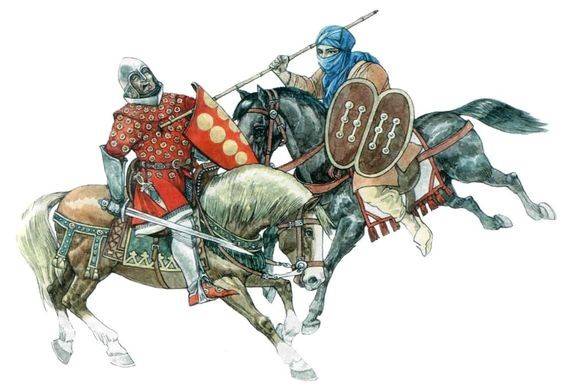
Drawing by the artist V. Korolkov based on the ceiling painting in the Alhambra, depicting a battle between Muslim and Christian warriors of the XNUMXth century. The Christian rider is wearing a barbute helmet with a nosepiece
The spear shines like a star;
Blood flows from copper mail;
A beard curls on the helmet.
A. Pushkin "Ruslan and Lyudmila"
stories about weapons. Middle Ages. “Having given the word, hold on, not giving it, be strong,” says the old folk wisdom, and since you promised to continue the story about medieval helmets, you should. And if last time it was miniatures, now let iron helmets appear before the eyes of VO readers in photographs of exhibits from the most famous museums in the world.
Today it will be two museums: the Royal Arsenal from Leeds (UK) and the Armory of the Hofburg Imperial Palace in Vienna (New Castle). We have already presented some of their collections here, but “something” is far from everything, so there will be a lot of new things that have not been presented here before.
So, let's begin.
Spangenhelm (frame, segmental helmet) appeared a very long time ago and, most likely, intuitively.
As a boy, in the 2nd grade, without knowing anything about helmet designs, I also made it from cardboard and paper, and all because the manufacturing method suggested itself. Such helmets appeared already in the troops of the late Roman Empire, as well as among their Germanic and Alanian opponents. They are found in burials and, perhaps, they were put there to emphasize the wealth of the buried. Similar finds of helmets were also made in the mounds of Japan and Northeast Asia.
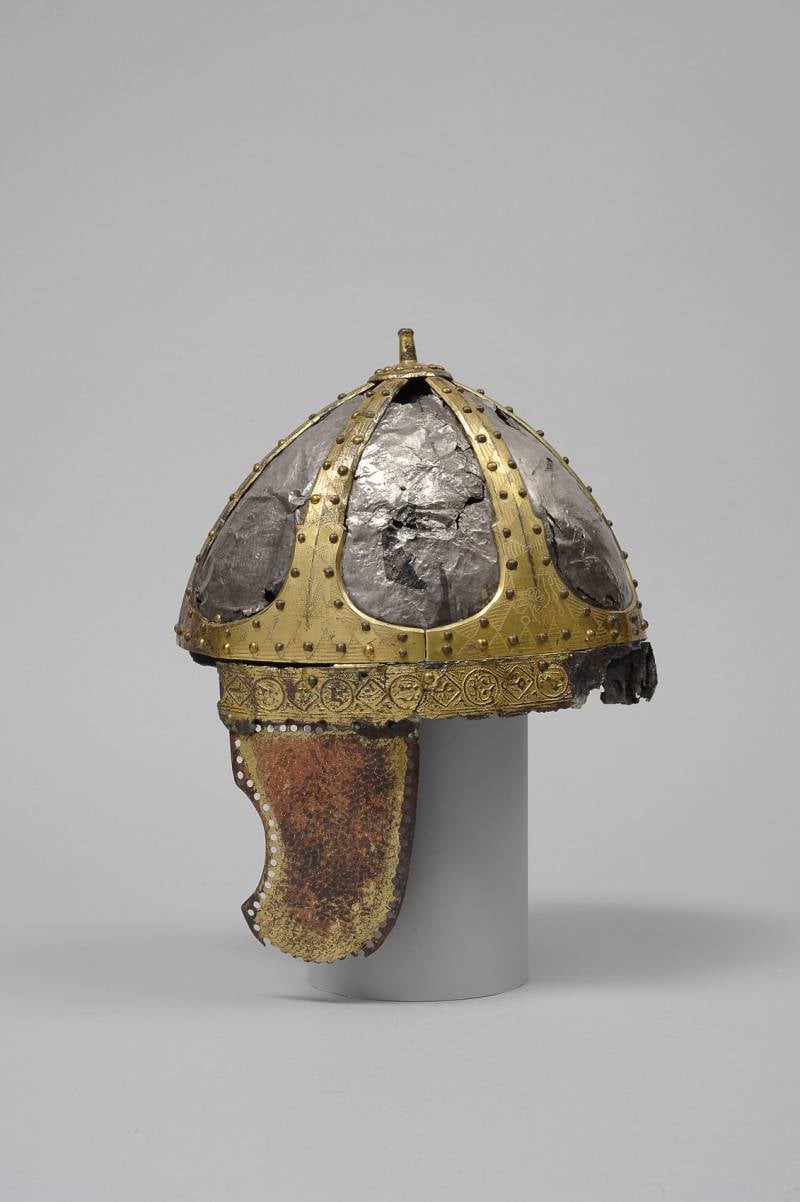
The photo shows a six-part spangenhelm, V - mid-VI centuries. Hofburg, New Castle, room I. Possibly made in Upper Italy (Ravenna?) or Eastern Roman Empire (Constantinople?). Crown made of forged iron segments covered with sheets of silver foil. Ornament: bronze leaf, gilding, embossing
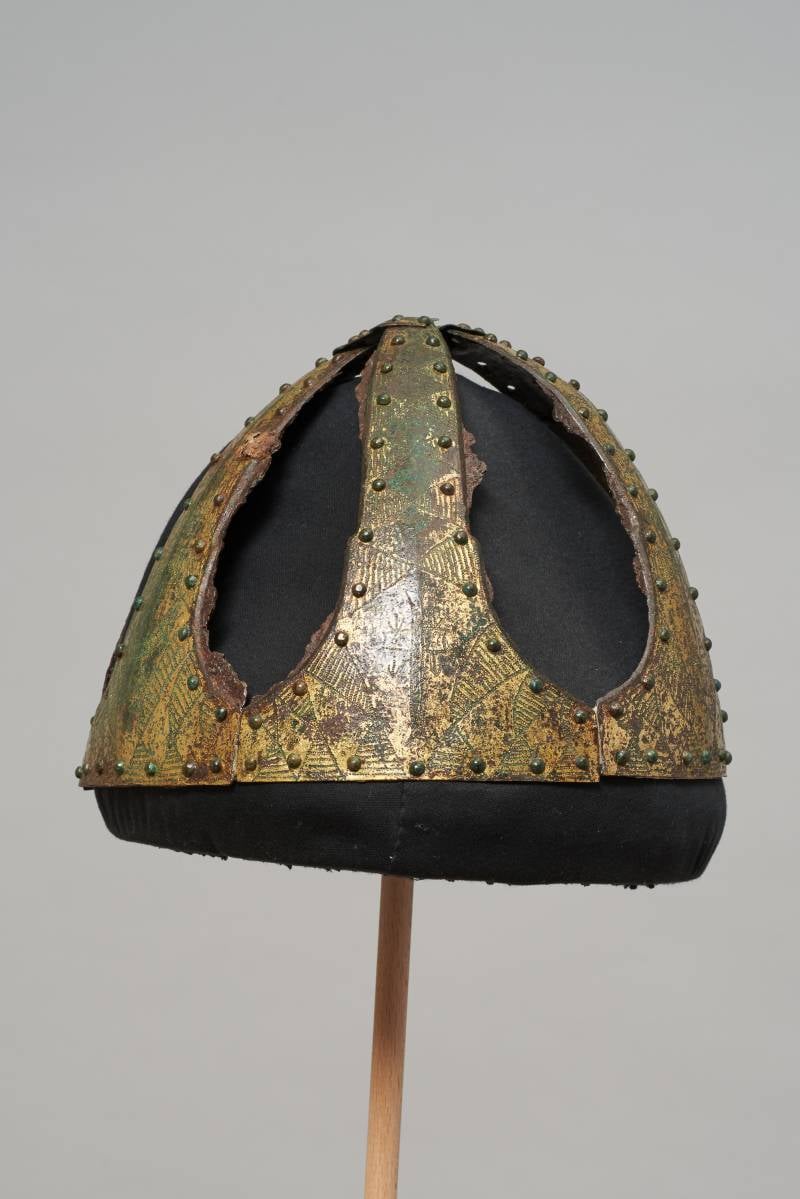
Another segmental helmet from the Hofburg exposition. The photo clearly shows its details - the base of copper segments that form its own frame, and with which, with the help of rivets, the internal plates of iron were connected. Naturally, rust destroyed the iron parts, while the copper parts were preserved.
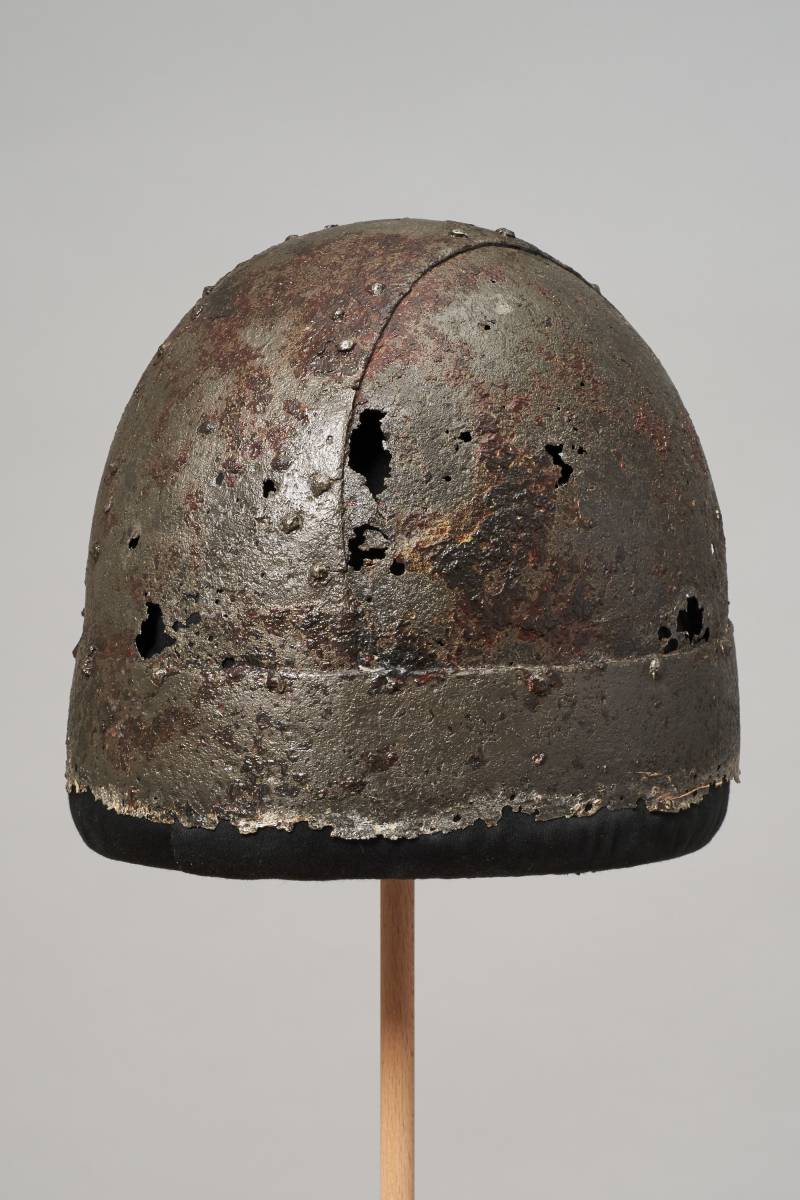
Bandhelm or “ribbon helmet” (XNUMXth century): this name was given to it in the Armory of the Hofburg Castle, and all because it is made of three crossed iron bands connected by rivets. The gaps between them in the form of curved and convex iron triangles were small in size, and it was not difficult to make them. Hofburg, New Castle, room I
He was also found in the troops of the late Roman Empire, among the Germans, Franks and many other "barbarians". And again, they were known both in Japan and in the countries of Northeast Asia.
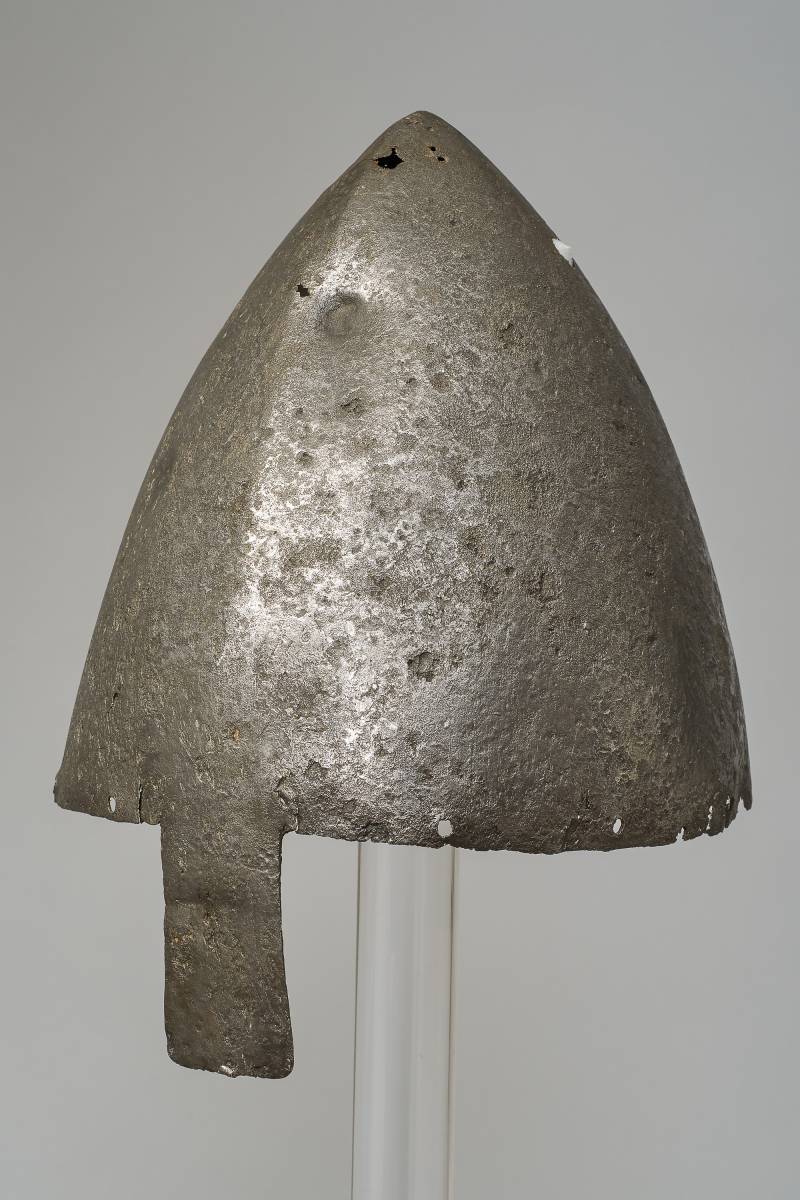
Conical iron helmet with a fixed nosepiece. Hofburg, New Castle, room I
Such helmets were used mainly in the High Middle Ages, from the 955th to the 1066th centuries; moreover, it is believed that they go back to Iranian models. The helmet in Vienna is forged from a single piece and has no decorations. Due to the fact that similar helmets are depicted on the Bayeux Tapestry, which demonstrates the conquest of England by the Normans, helmets of this form have become incorrectly called "Norman". Two dates: the death of St. Wenzel (Wenceslas) - XNUMX (whose similar helmet is in Prague) and the battles of Hastings - XNUMX - give us the approximate time period in which this helmet could probably have been made.
In addition to a large almond-shaped shield and a knee-length chainmail shirt, the spandenhelm was the rider's protective armament, and was worn over a chainmail hood, so he had no lining. Only a few examples from this group of helmets have survived, including this Viennese helmet and the helmet of St. Wenzel (Wenceslas). The Viennese helmet was found in 1864 near Olmütz in Moravia.
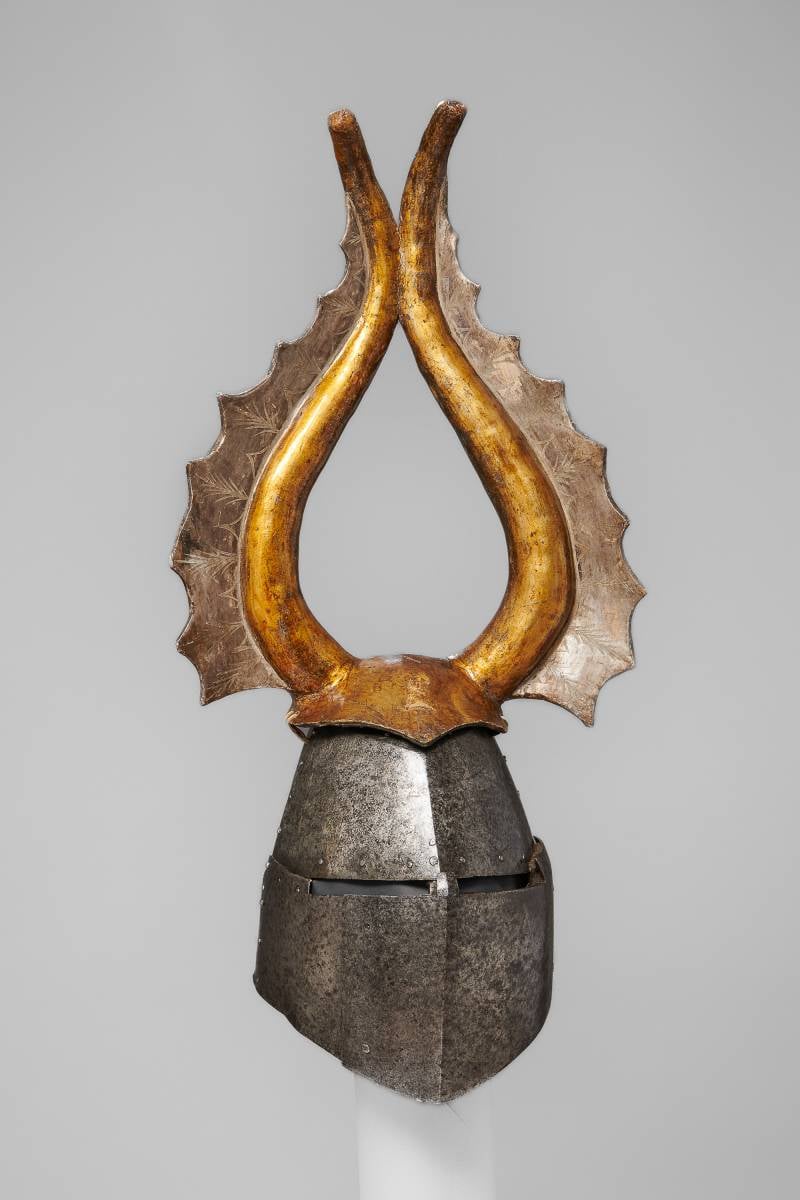
Helmet of Albert von Prank (c. 1350). Hofburg, New Castle, room I
The main drawback of the helmets of the early XNUMXth century was that their face protection was completely inadequate. As a result, by the middle of the XNUMXth century, a "grand helmet" topfhelm appeared. The collection of the Vienna Arsenal exhibits a “grand helmet” of the mid-XNUMXth century. Moreover, it is so heavy that it was probably used only as a tournament.
The helmet is riveted from two frontal plates, two neck plates and a flat round "crown" plate, which ultimately gives the helmet the appearance of a pot. However, increased protection brought with it the disadvantage of a significant limitation of the field of view. Knights in huge helmets could only see their surroundings through narrow slits.
Another inconvenience was the lack of air to breathe. The Viennese helmet should be regarded as a particularly valuable example of its kind, since of the dozen surviving "grand helmets", only the Viennese helmet and the helmet of the Black Prince of Canterbury have helmet decorations.
Since the complete covering of the face made it difficult to identify the knight, the upper part of the helmet began to be used to place the armorial figures painted on the shield. These decorations, called "zimier" (zimier), were mainly made of wood, leather or parchment. In the case of Prank's helmet, it is shaped like buffalo horns.
At first, the "Viennese helmet" hung as a funeral over the hereditary burial of the Styrian von Prank family in the Augustinian monastery of Sekau. But in 1878 it was bought for the imperial collection and thus ended up in Vienna.
It is believed that the original owner of this artifact may have been Albert von Prank, whose seal, dated 1353, shows an almost identical Viennese "pot helmet".
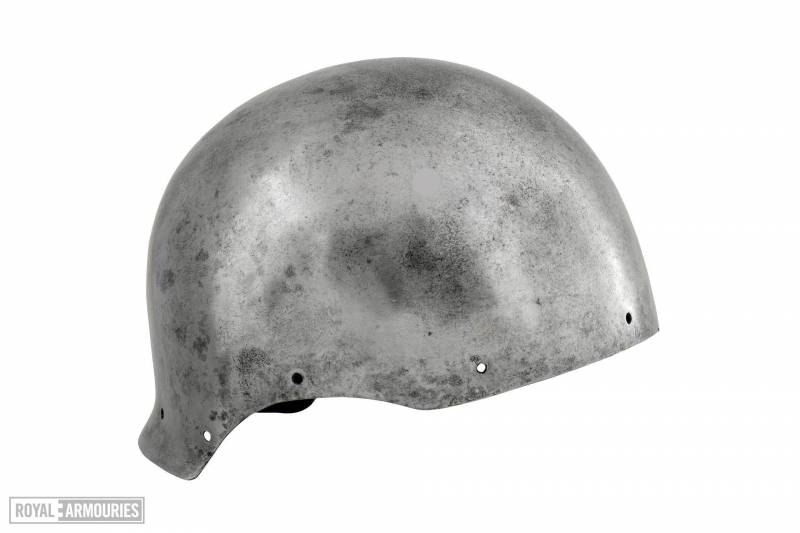
Helmets in the form of a small cap, tightly fitting the crown, turned out to be, so to speak, “out of time”. Before us is an artifact from the Royal Arsenal in Leeds, and dates back to 1500-1530. But at the same time, if we recall the miniatures we saw earlier, it becomes obvious that they were worn in the 135th, 910th, and 185th centuries, they were so comfortable. Helmet height XNUMX mm. Weight XNUMX g. Width XNUMX mm
Well, they, again, owe their appearance to the “grand slam”. It was impossible to stay in it all the time. But in what then it was possible to be constantly? The chainmail hood no longer provided the required protection, and this is how the Servillier helmet-balaclava appeared.
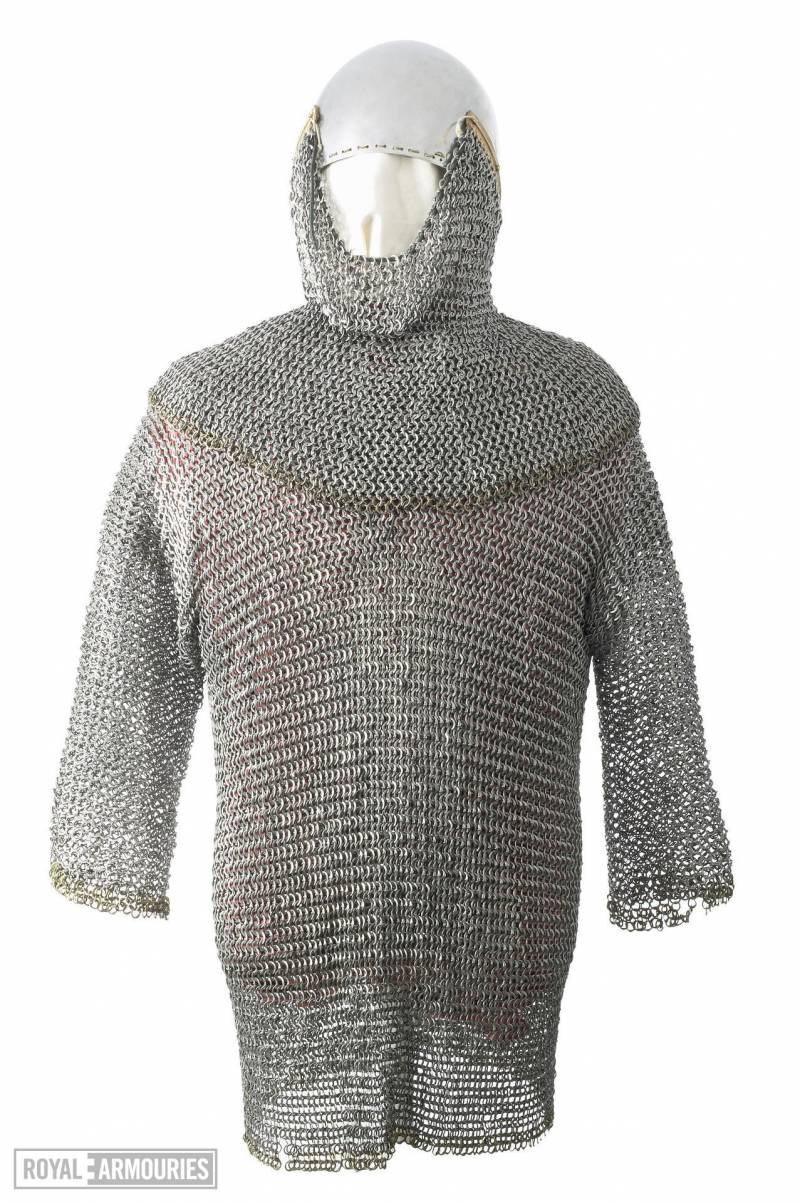
Now warrior-at-arms 1331-1370. looked like this photo. Instead of a hood, a balaclava helmet with a removable aventail-aventale attached to it. Royal Arsenal, Leeds
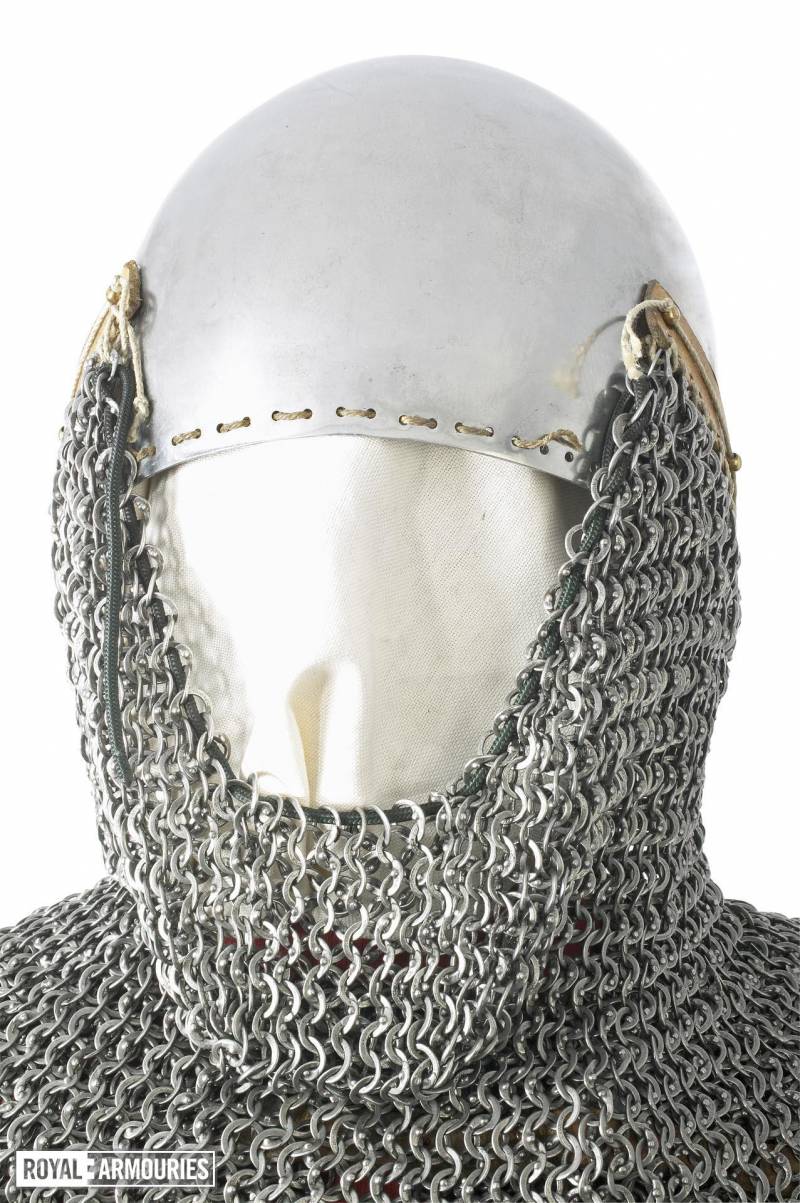
The chain mail mask, among other things, could be pulled off with the help of a lace threaded through the rings and generally cover half of the face! Royal Arsenal, Leeds
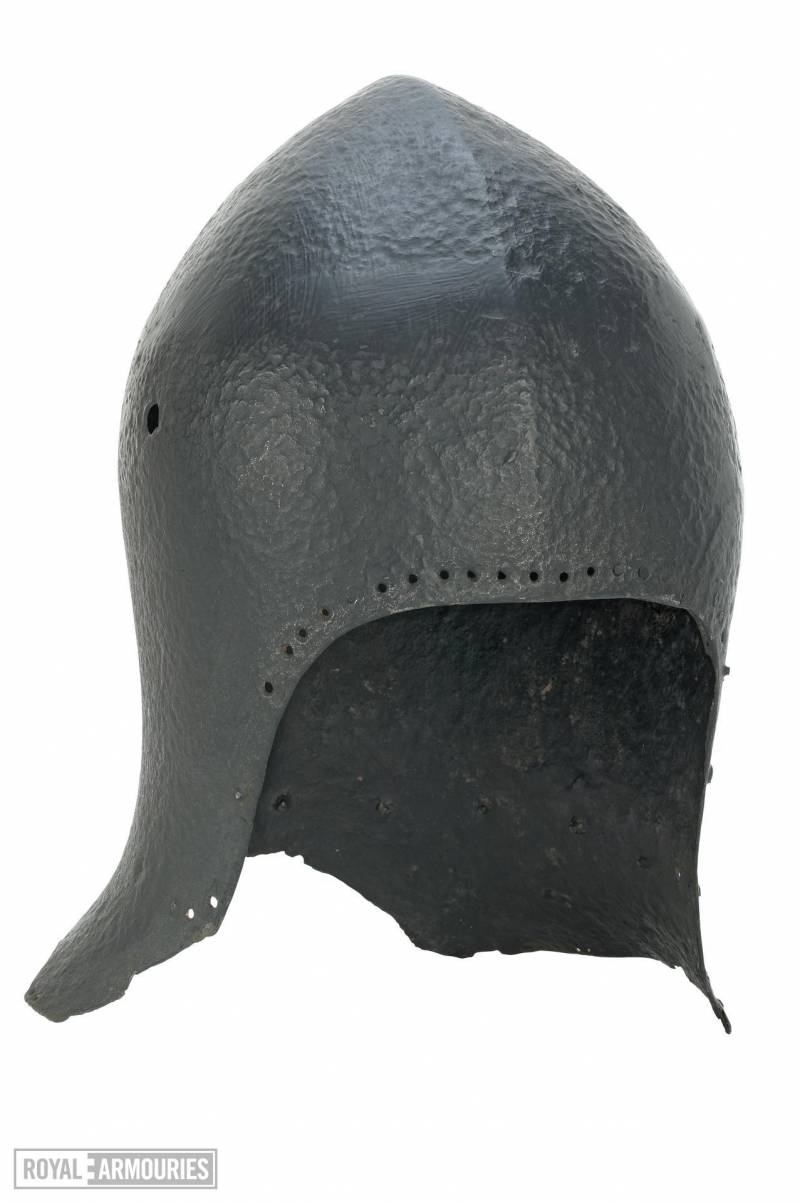
The balaclava began to stretch upwards and so the bascinet helmet appeared. Moreover, this photo shows not just a bascinet, but a “grand bascinet” of the early 360th century, the side holes on which indicate that it could be equipped with a visor. Helmet height 265 mm, width 3,07 mm. Weight XNUMX kg. Royal Arsenal, Leeds
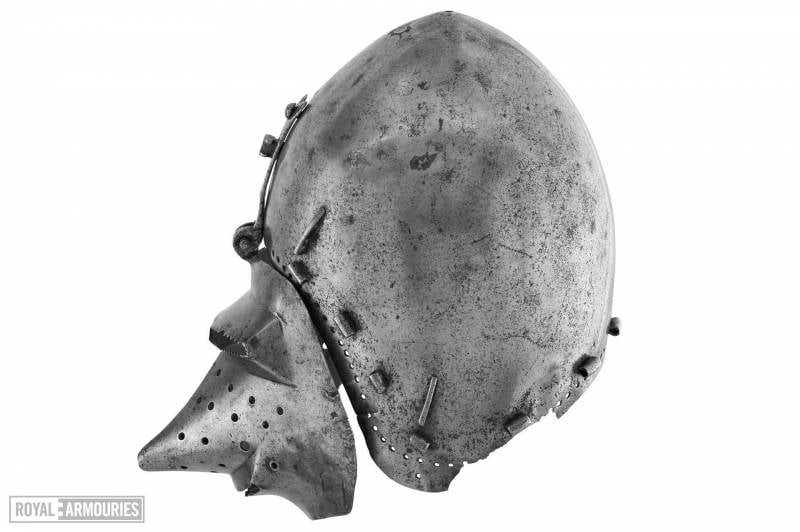
Bascinet 1370. On the earliest bascinets with a visor, it was attached to only one upper loop. Because of their characteristic shape, they were called "pig snout"! Helmet height 254 mm. Width 210 mm. Helmet weight 1 g. Visor weight 420 g. Royal Arsenal, Leeds
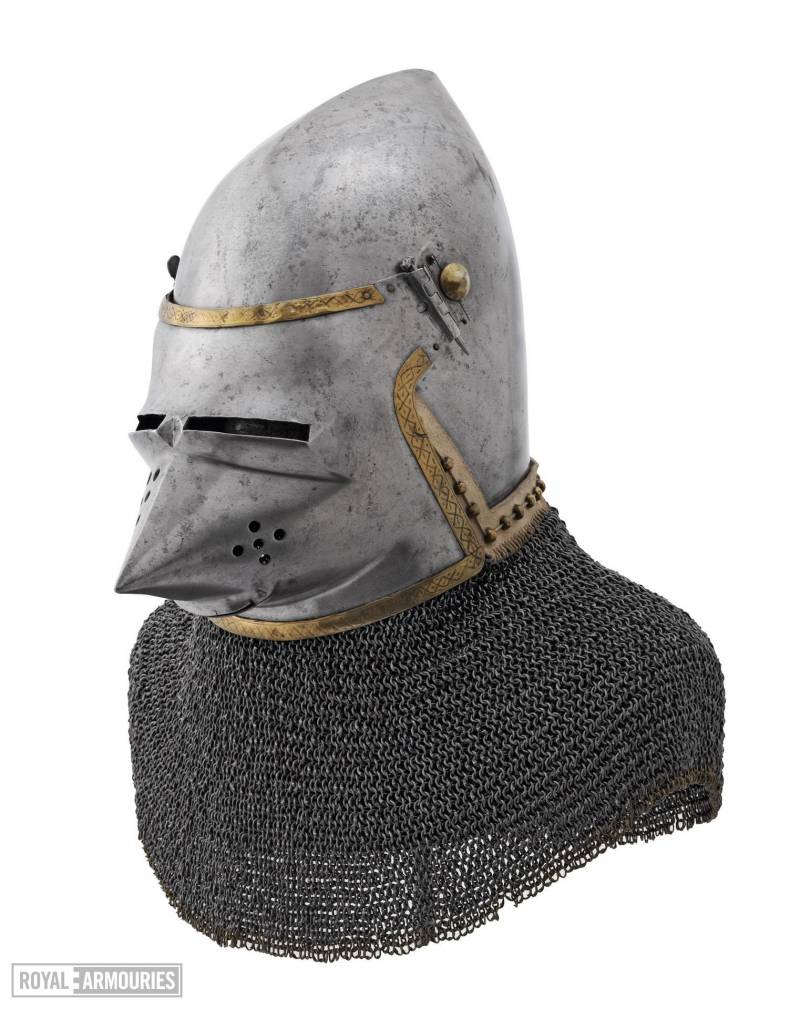
However, almost at the same time, bascinets with a visor on two loops also appeared. Bascinet 1371–1399 Royal Arsenal, Leeds
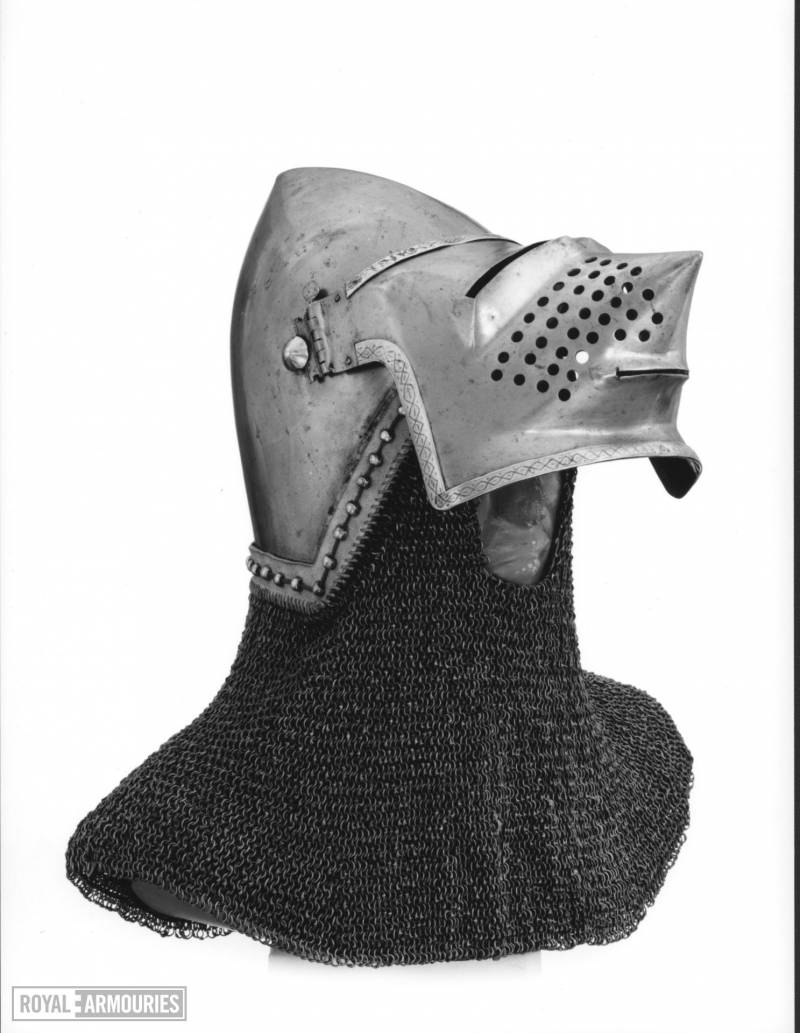
He gave protection no worse than the "grand helmet", but was much more comfortable to wear. And breathing in it was also much easier! Bascinet 1371–1399 Royal Arsenal, Leeds
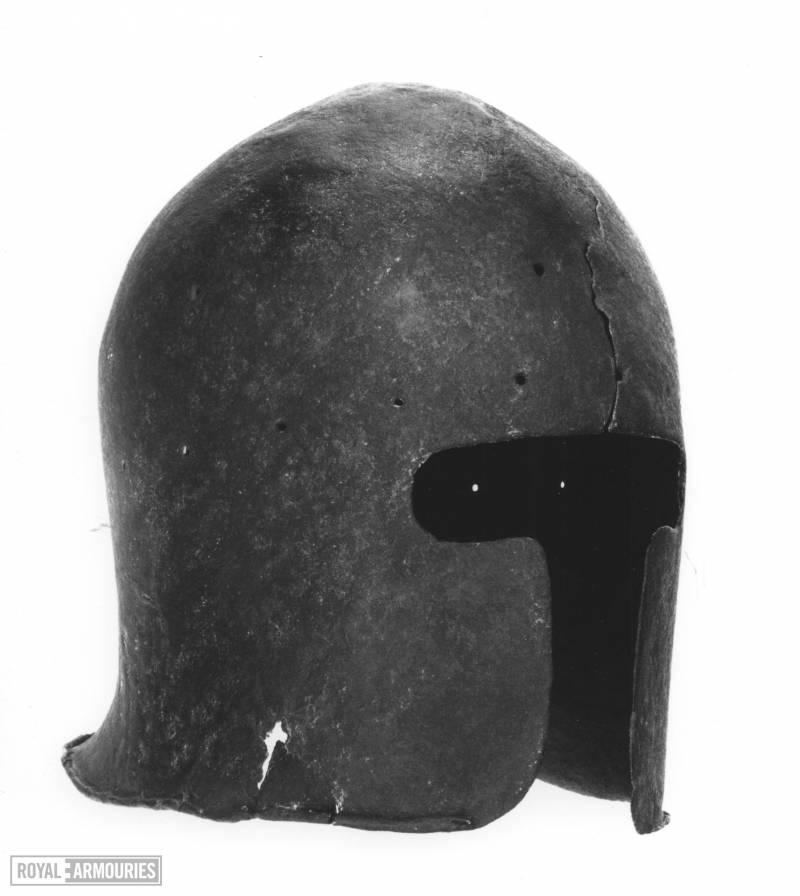
Its main drawback was the complexity of manufacturing the visor. We thought - what if we remove it, leaving only a T-shaped slot for the eyes and ... beard on the front surface? This is how the barbut helmet turned out, and in the photo it’s not just a bartute, but made in Venice in 1440. The height of the helmet is 255 mm, the width is 200 mm. Weight - 1 g. Such helmets were called "Venetian salad" (or sallet). Royal Arsenal, Leeds
In general, the second half of the XNUMXth century, associated with the end of the Hundred Years War and the War of the Scarlet and White Roses, was extremely rich in various improvements in terms of armor and helmets.
Very simple barbute helmets appeared.
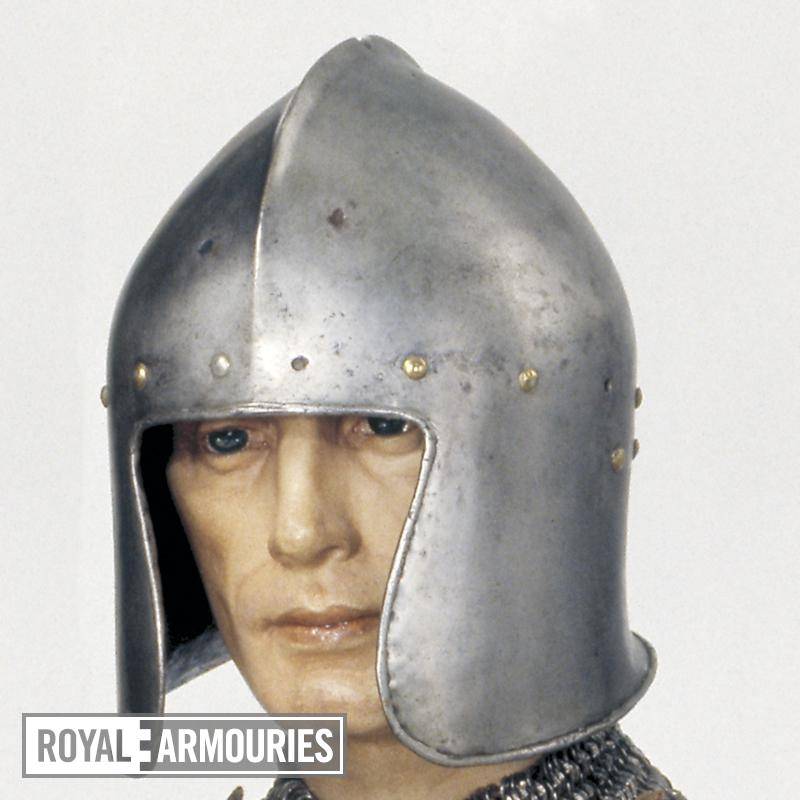
For example, here is the one in the photo - helmet 1 Royal Arsenal, Leeds
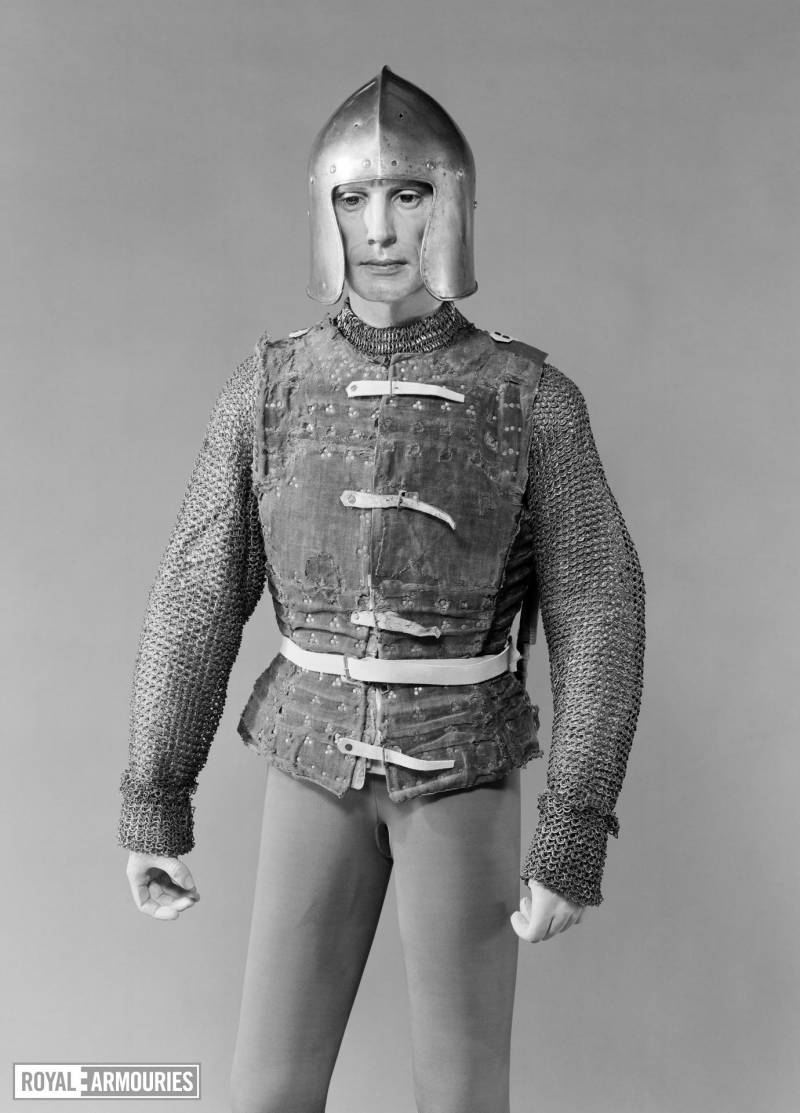
The brigandine armor also became widespread - it looked like a sleeveless jacket made of fabric lined with metal plates like tiles. One could guess that they were only by the presence of rivet heads, usually copper, on its surface. Royal Arsenal, Leeds
Helmets-sallets (salads) of various, including national, forms spread. Moreover, not just apprentices were engaged in them, if only to make a larger number, but at a cheaper price, but also true masters of their craft. Here, for example, the helmet of one of them ...
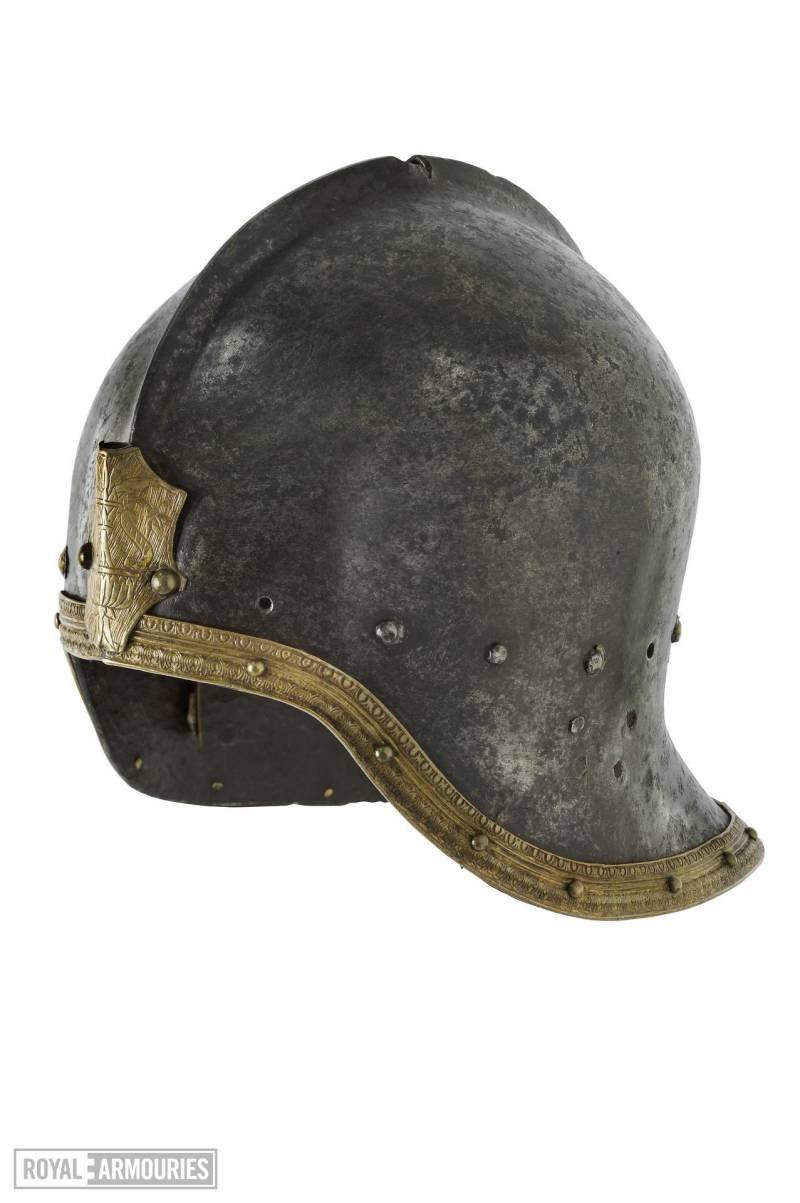
Sallet (1471–1499) open with applied gilded copper alloy border. This masterfully crafted helmet bears the mark of the maker in the form of two crossed keys below the open crown. It is attributed to the Milanese gunsmith Domenico Barini Detto, known as Negroli (d. 1526). Son of Giovanni Barini who worked for the prominent Missaglia family of gunsmiths. By the end of the 1452th century, Domenico had established himself as a highly skilled gunsmith. In subsequent years, his business dominated the market for the production of armor of princely dignity. The beauty of this helmet, made from a single piece of steel, lies in the subtle study of the anatomy of the human skull, and the elongated tail creates an aesthetic s-curve, both along the bottom edge and at the back of the neck. In order not to detract from the overall shape, the sallet decoration was limited to a finely detailed Greco-Roman style gilded copper alloy border, and a plume holder with an engraved shield was attached to the front. Although this type of helmet is often found in Italian paintings of the period, such as that of the Florentine painter David Ghirlandaio (1525–XNUMX), surviving examples are comparatively rare, making this helmet all the more valuable. Royal Arsenal, Leeds
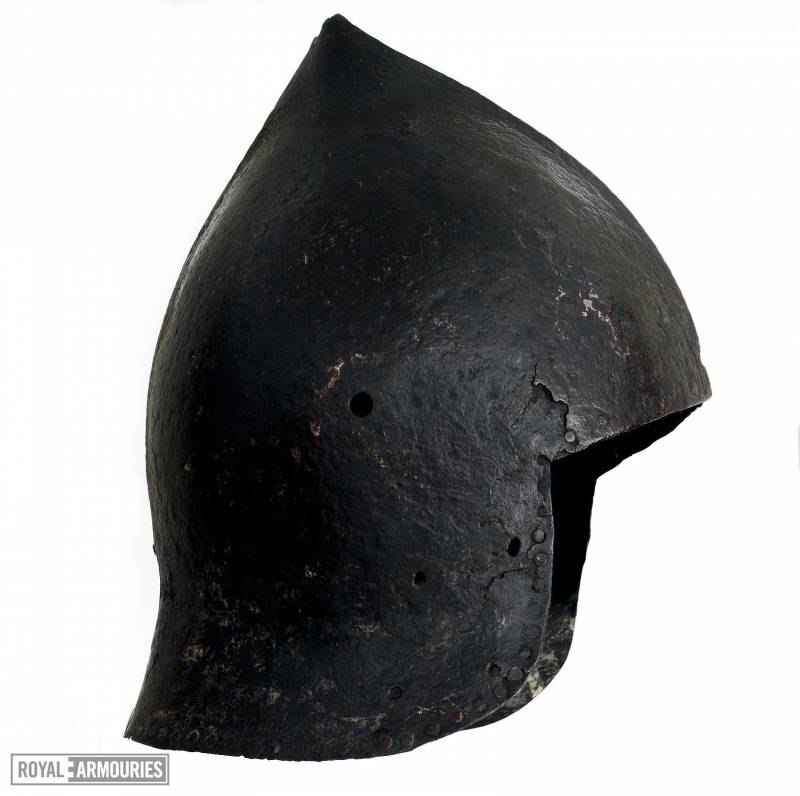
Well, this is a mass "serial production". Sallet 1471–1499 Royal Arsenal, Leeds
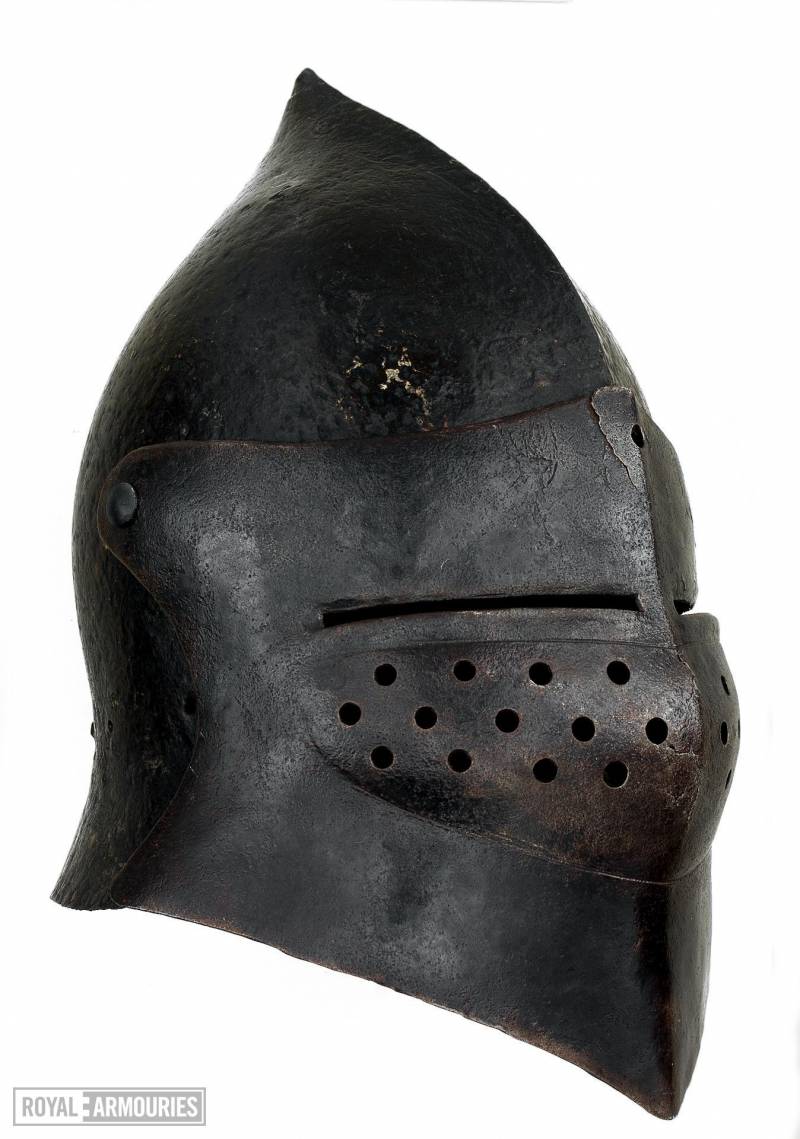
So he looked with a visor. Sallet 1471–1499 Royal Arsenal, Leeds
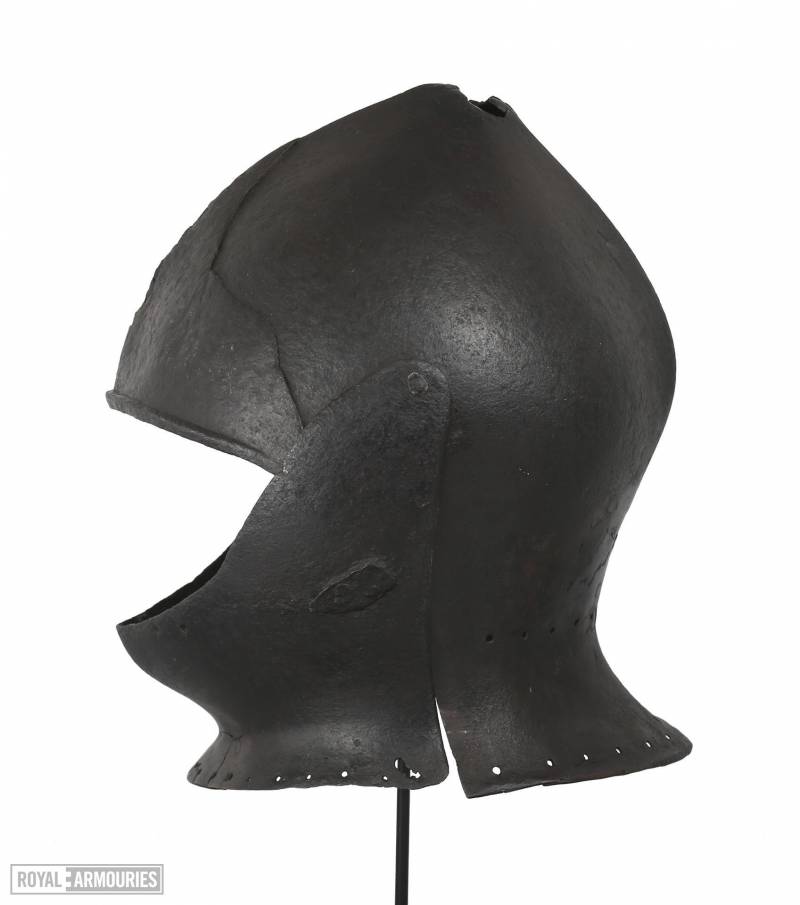
Another so-called "closed helmet". In fact, this is a bascinet with a chin rest, but without a visor. Helmet 1485 Dimensions: height 305 mm; width 180 mm; weight: 2 Royal arsenal, Leeds
Many of our readers with engineering degrees are interested in the metal from which these helmets were made. Unfortunately, not all helmets from the collection of the Royal Armory were subjected to metallographic analysis. Nevertheless, we managed to find one helmet, about which such information is available ...
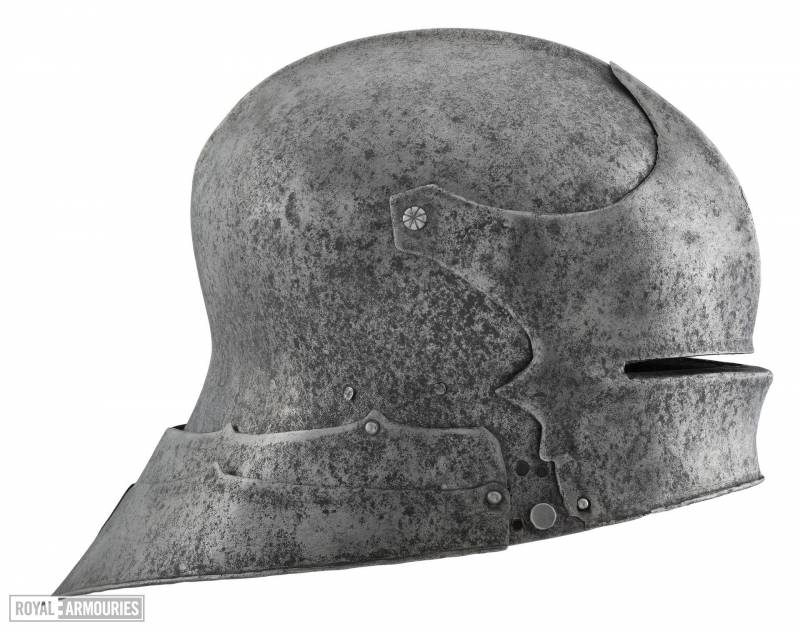
South German sallet (1480–1490) with a hinged neck guard made of riveted plates. The material is mild steel containing a mixture of ferrite and a small amount of perlite (perhaps 0,1% C) with a large amount of slag inclusions. It appears to be made from two pieces of different material, forged together during manufacture. Royal Arsenal, Leeds
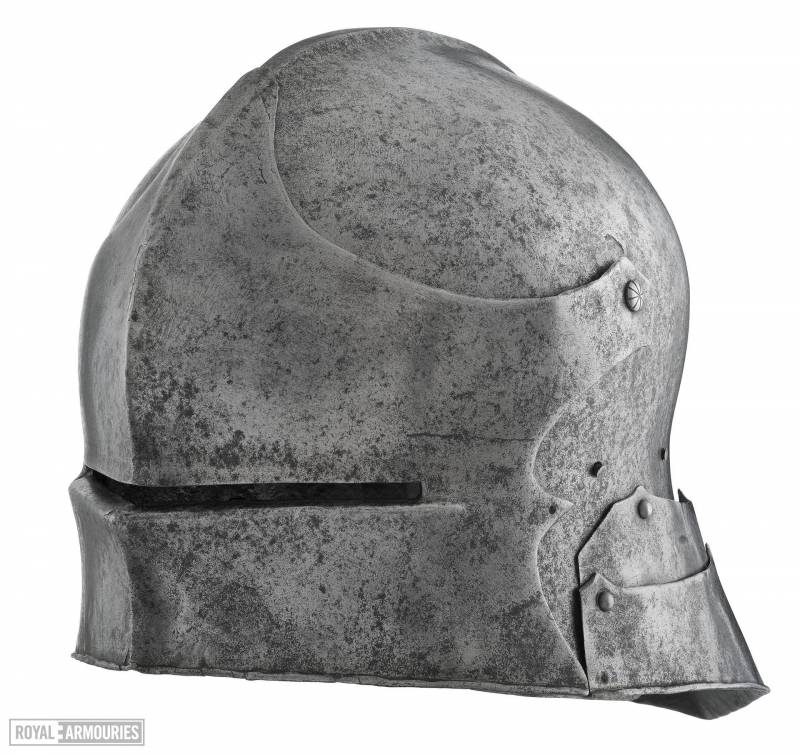
The same helmet. Front view
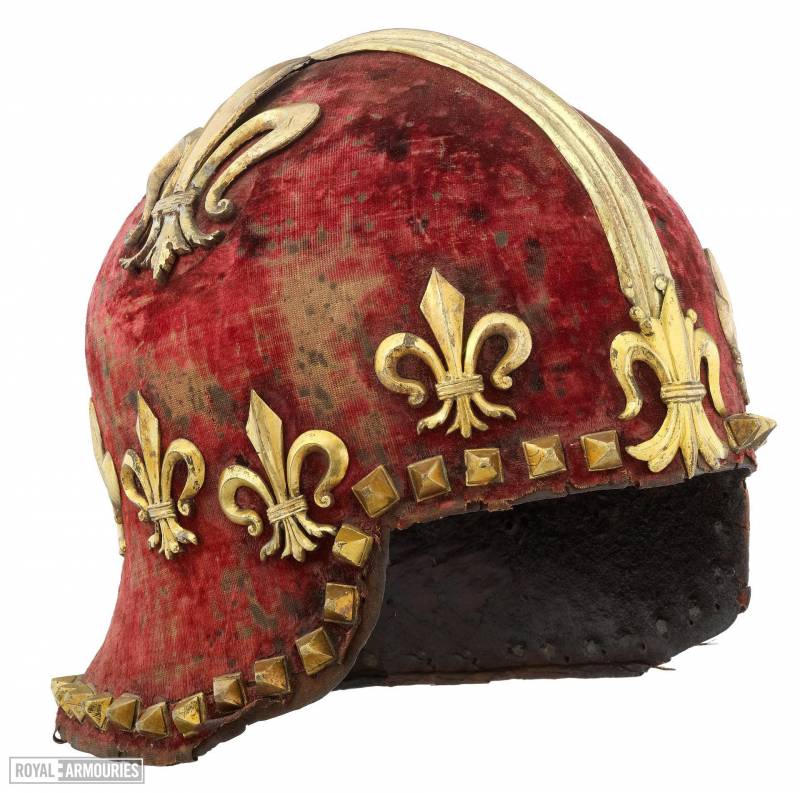
Another sallet from 1470. Covered in red velvet and decorated with gilded lilies! Weight: 2 Royal Arsenal, Leeds
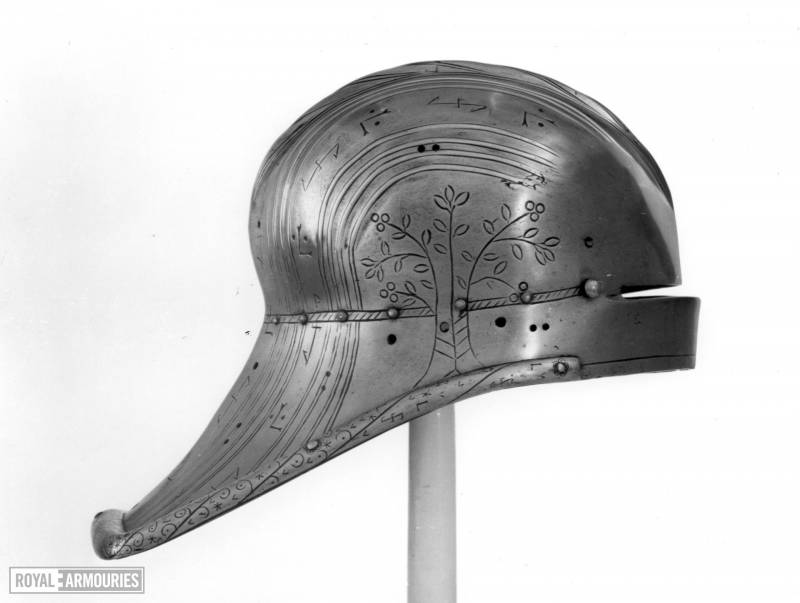
And this is a tournament salad of 1520 - belonging to the Rennenzoyg - tournament armor for one of the varieties of Rennen - an equestrian tournament, in which it was forbidden to hit the helmet. Dimensions: length 370 mm, width 230 mm
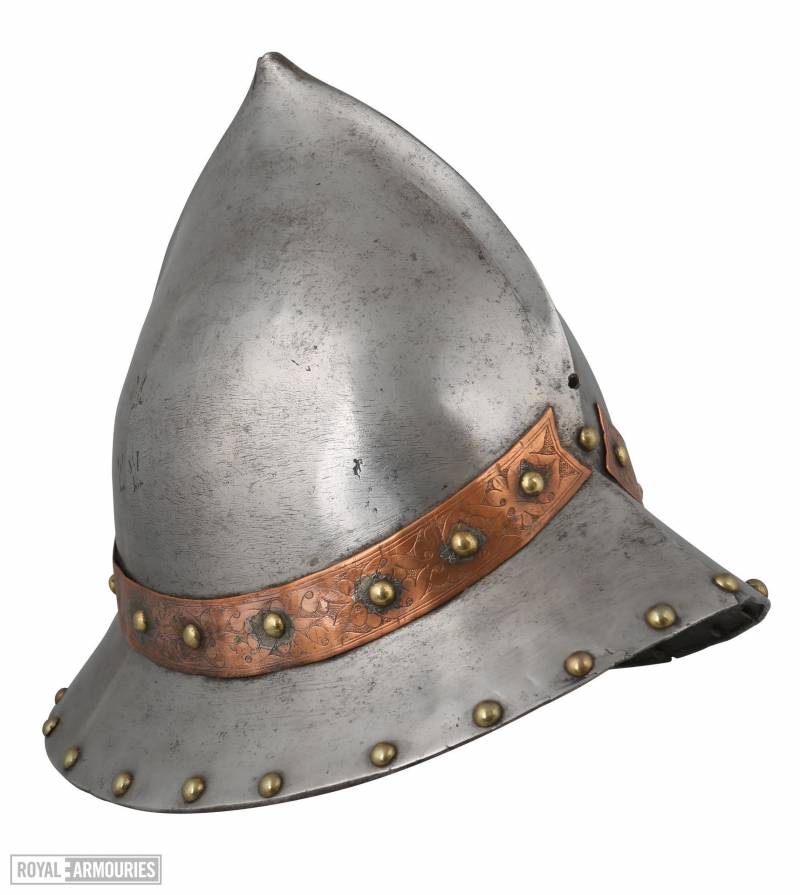
The penultimate one at our today's exhibition of "iron" is the "iron hat" (1471-1499), called capaseta in the specification of the Vienna arsenal. As you can see, it is suitable for both an infantryman and a knight, especially if he wears it with a bouvier chin! Royal Arsenal, Leeds
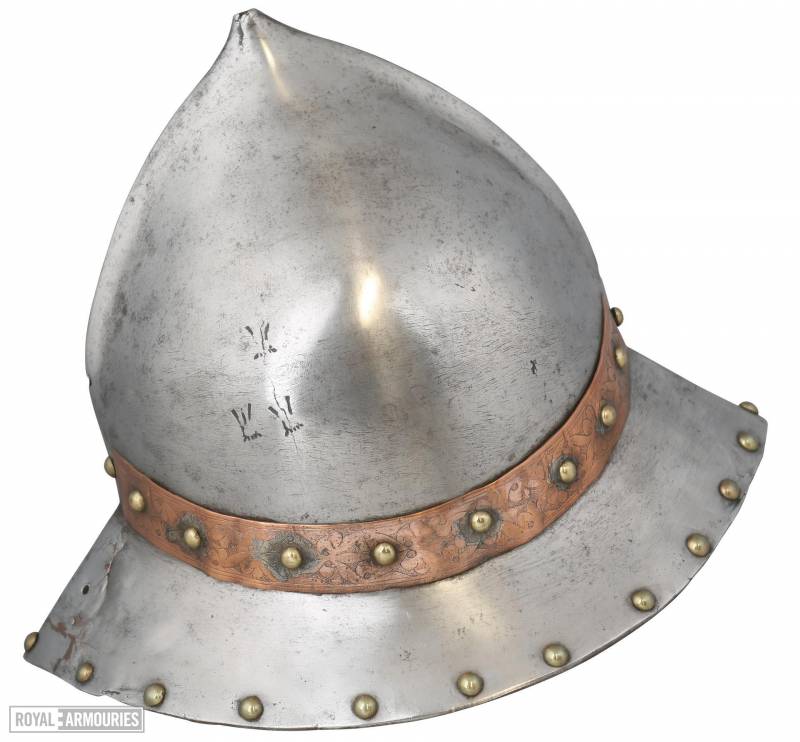
And this is how she looks in profile ...
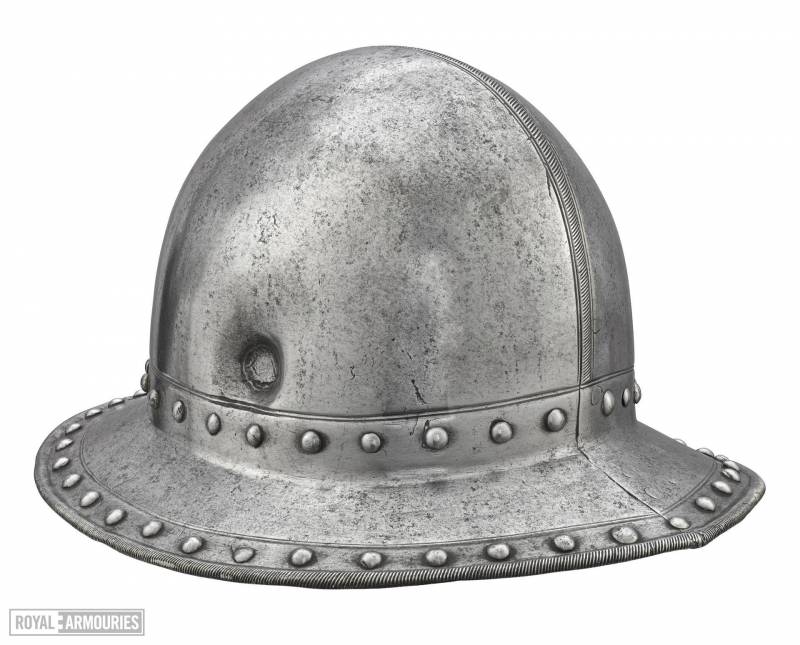
Siege helmet (1610-1650) - that's what it is! Consists of two parts, connected by a pair of rivets in front and behind, and a line of rivets along the edge of the crown. The decoration is a thin “braid” along the edge with notches and a gilded perforated holder for a plume, on the upper edge of which three fleur-de-lis are depicted. There is a large recess on the right side of the helmet. And although this is clearly a bullet mark, it is obvious that this is not combat damage, but a "control shot for quality control." Helmet of light metal with traces of gilding along the edge bordered with piping. Overall dimensions: helmet height 215 mm, length 382 mm, width 323 mm, weight 8,68 kg
For a long time in this, of course, it was simply impossible to walk. But on the other hand, there was no such bullet that could pierce him from a long distance.
To be continued ...
Information